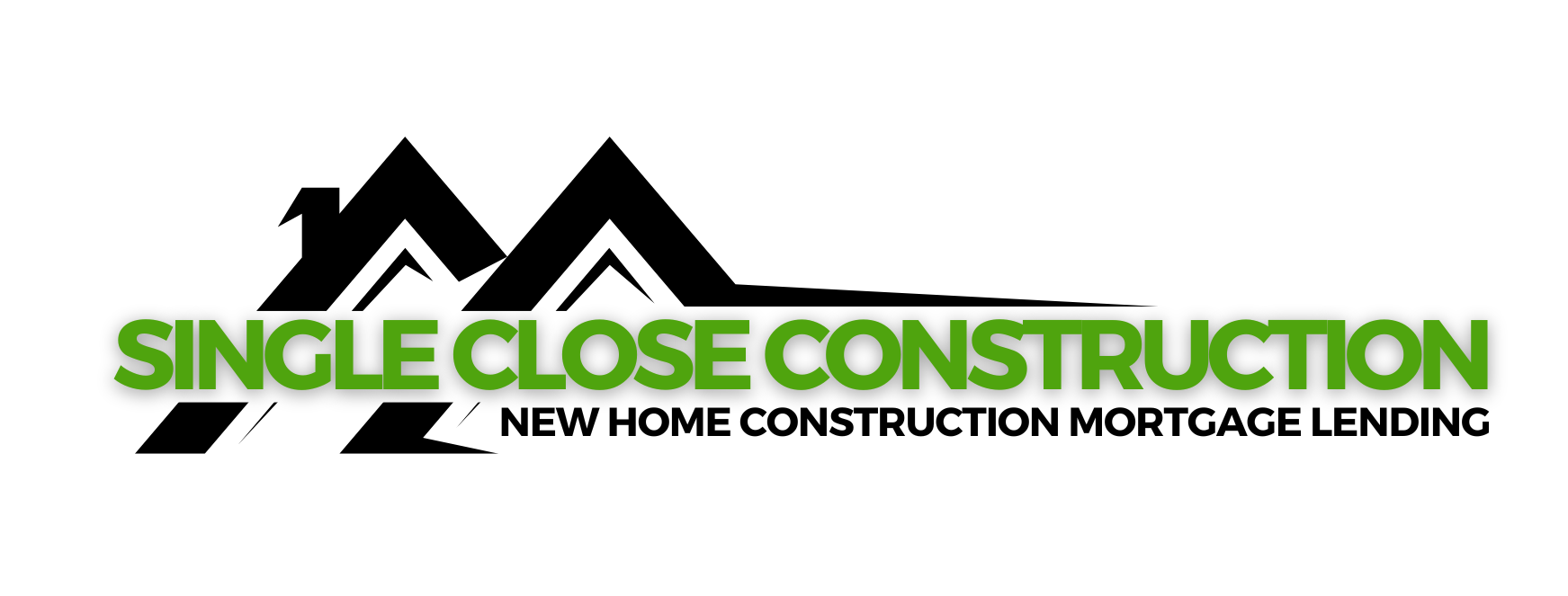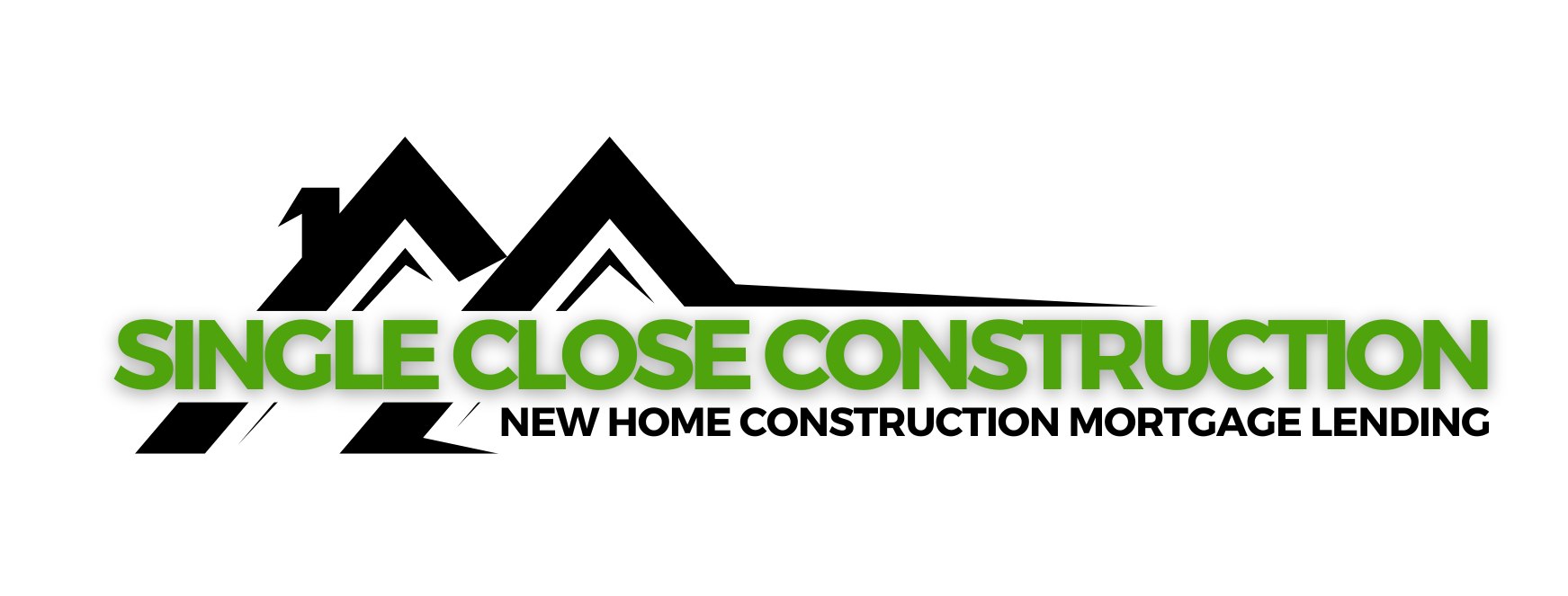USDA Single Close Construction Loans
USDA Single Close Construction Advantages
Discovering the ideal plot of land where you envision constructing your dream home can feel overwhelming, for sure. By understanding to process from the outset, you’ll lay a solid foundation for achieving success in turning your vision into a reality.
The USDA single close construction loan presents an opportunity to optimize both time and finances. This loan option caters to individuals aiming to build a new home in rural areas, offering a simplified financing process tailored explicitly to streamline the construction journey.
- One loan for construction and home financing
- Qualifying once reduces funding risks
- One appraisal and one closing
- No down payment required
- Fixed interest rates
- Tailored for properties in rural areas
- Payments don’t need to be made during construction
What is a USDA Single Close Construction Loan?
A USDA Single Close Construction Loan is a financing option offered by the United States Department of Agriculture (USDA) for individuals looking to build a new home in rural areas. This loan program aims to promote homeownership and development in rural communities by providing accessible and affordable financing for new construction projects.
Unlike traditional construction loans that require separate financing for the construction phase and a subsequent permanent mortgage, the USDA Single Close Construction Loan combines both into a single loan. This simplifies the financing process, reduces paperwork, and potentially saves time and money for borrowers.
Key features of the USDA Single Close Construction Loan include:
1. Low- to No-Down Payment: The loan offers low down payment options, often requiring little to no down payment. This makes it more affordable for borrowers, especially those who may not have substantial upfront funds.
2. Streamlined Financing: By combining the construction and permanent mortgage into one loan, borrowers only have to go through the application and approval process once. This eliminates the need for separate closings and simplifies the overall financing procedure.
3. Designed for Rural Areas: The loan program specifically caters to borrowers constructing homes in eligible rural areas as defined by the USDA. These areas are typically outside of densely populated urban regions.
4. USDA Backing: The USDA insures the loan, providing lenders with increased security and confidence in offering favorable terms and competitive interest rates to borrowers.
It’s important to note that the USDA Single Close Construction Loan has specific eligibility criteria and requirements. These include income limits, property location requirements, and adherence to USDA construction standards. Prospective borrowers should consult with a USDA-approved lender or mortgage professional to determine their eligibility and receive accurate information regarding the loan program.
How to Get a USDA Single Close Construction Loan
To obtain a USDA Single Close Construction Loan, you can follow these general steps:
1. Determine Eligibility: Verify if the property you intend to build on is located in an eligible rural area as defined by the USDA. You can use the USDA’s eligibility map or consult with a USDA-approved lender to confirm eligibility.
2. Find a USDA-Approved Lender: Look for lenders that offer USDA Single Close Construction Loans. These lenders are approved by the USDA to provide financing under the program. You can search for approved lenders on the USDA’s website or consult with a mortgage broker specializing in USDA loans.
3. Prequalification and Application: Contact the USDA-approved lender and begin the prequalification process. Provide the necessary financial information, such as income, employment history, and credit details. The lender will assess your eligibility and determine the loan amount you may qualify for. Once prequalified, you can proceed with the formal loan application.
4. Submit Required Documentation: Prepare and submit the required documentation as requested by the lender. This typically includes income verification (such as tax returns, pay stubs, and bank statements), employment history, credit reports, and any other supporting documents the lender may require.
5. Construction Plans and Budget: Work with an architect or builder to create detailed construction plans and obtain a comprehensive budget for the project. These plans and budget will be crucial for determining the loan amount needed and assessing the feasibility of the project.
6. Loan Approval and Closing: The lender will review your application, supporting documents, and construction plans. If approved, you will receive a loan commitment letter outlining the terms and conditions of the loan. A closing date will be scheduled, and during the closing, you will sign the loan documents and pay any applicable closing costs.
7. Construction Phase and Loan Disbursement: Once the loan is closed, the construction phase begins. The lender will disburse funds from the loan based on a predetermined schedule, as construction milestones are met. The lender may conduct inspections to ensure the work is progressing as planned.
8. Conversion to Permanent Mortgage: After construction is complete, the loan automatically converts to a permanent mortgage. You will begin making regular mortgage payments based on the terms and interest rate agreed upon during the loan approval process.
Keep in mind that specific requirements and processes may vary among lenders and based on individual circumstances. Working closely with a USDA-approved lender and maintaining open communication throughout the process will help ensure a smooth application and loan approval experience.
Partnership Guidelines
Review our requirements and descriptions of the lending choices available to our partners.
Loan Requirements to Meet
To qualify for a USDA home loan, also known as a USDA Rural Development Loan, you need to meet several requirements. Here are the key eligibility criteria:
1. Property Location: The property you intend to purchase or refinance must be located in an eligible rural area as defined by the USDA. You can use the USDA’s eligibility map or consult with a USDA-approved lender to determine if the property qualifies.
2. Income Limits: USDA loans have income limits based on the area’s median income. Your household income must fall within the specified limits to be eligible for the loan. The limits vary depending on family size and the location of the property. You can check the USDA’s income eligibility guidelines or consult with a USDA-approved lender to determine if your income meets the requirements.
3. Citizenship or Legal Residency: You must be a U.S. citizen, permanent resident, or qualified alien to be eligible for a USDA loan.
4. Creditworthiness: While the USDA does not set a specific minimum credit score requirement, most lenders look for a credit score of at least 640 or higher to qualify for a USDA loan. However, some lenders may consider applicants with lower credit scores if they meet other compensating factors.
5. Debt-to-Income (DTI) Ratio: Your debt-to-income ratio compares your monthly debts to your gross monthly income. Typically, the USDA prefers a DTI ratio of 41% or lower, although higher ratios may be considered if you have compensating factors such as a strong credit history or significant cash reserves.
6. Stable Income and Employment: You need to demonstrate a stable employment history and sufficient income to repay the loan. Lenders will verify your employment and income through pay stubs, W-2 forms, and tax returns.
7. Repayment Ability: You must have the ability to repay the loan. Lenders will evaluate your financial situation, including your income, debts, and assets, to ensure you can afford the monthly mortgage payments.
It’s important to note that these are general eligibility requirements, and specific guidelines may vary among lenders and loan programs. Consulting with a USDA-approved lender or mortgage professional will provide you with detailed and up-to-date information on the specific requirements and qualifications for a USDA home loan based on your circumstances.
USDA Single Close Construction Loans FAQs
Financing the build and long-term mortgage of your new home is an important step in beginning this process. It’s ok to have questions. We’ve compiled answers to the frequently asked ones, but don’t hesitate to ask more.
Do I need a down payment for a USDA single close construction loan?
Required down payment amounts vary depending on the type of loan you want. With a USDA single close construction loan, we don’t require any down payment because the loan has a 100% Loan-to-Value (LTV) ratio.
In comparison, our other single close loan programs offer down payments anywhere from 0-3.5% to a maximum of 5%. This is a small fraction of what other lenders typically ask for with traditional construction loans, which require a down payment of around 20% to get the best loan terms.
What costs are required to close a USDA single close construction loan?
There are closing costs associated with processing any loan, and the costs of a single close construction loan are comparable to standard mortgages. They include costs for the lender to service the loan, as well as an appraisal and other fees.
With a single close loan, you only pay closing costs once and your closing package includes a single promissory note and one deed.
This is a unique benefit that many other financing options for home building don’t offer. With other loan types, borrowers often need two or more loans to finance the actual build and their long-term mortgage, meaning they pay closing costs for each of those loans.
How do USDA single close construction loan interest rates compare to other construction loans?
ButtonInterest rates for USDA single close construction loans vary based on a variety of factors including your income and finances, credit score, the location where you want to build, and loan amount.
To know what interest rate your situation would qualify for, get in touch with one of our loan advisors for more specific information.
How does my lender get involved with the construction of my new home?
We have an in-house single close construction management team. Using our years of experience and home-building expertise, our experts — with support from the USDA — will review and approve documentation from every stage of construction.
This includes project budget and timeline, planning and specifications, permits and inspection, and building code best practices.
At the start, you’ll want to find and engage the builder of your choice as long as they meet the quality standards for the USDA program. Our builder vetting process ensures that all builders accepted into our program have a sterling record of on-time completion for their home projects. Quality, safety, and efficiency are top priorities.
Our team will help keep your project on track every step of the way. This allows potential problems to be dealt with before they can turn into major delays.
Our completely hands-free building process means you never need to worry about applying for building permits or arranging inspections as your construction takes shape. It is all handled for you. The documentation you might need in the future is centralized all in one place.
What other loan options are there besides a USDA single close construction loan?
A USDA single close construction loan is only one of the many options for those who are interested in building their own home.
Some additional options you might want to consider include other specialized construction loans. This includes loan programs for veterans, active-duty military, and spouses through the VA.
An FHA loan might work well for building a home that isn’t in a rural area like the USDA loan is meant for. Or there are Fannie Mae construction loans designed for people with low-to-moderate-income levels.
We can help you determine what loan program is best for your situation



